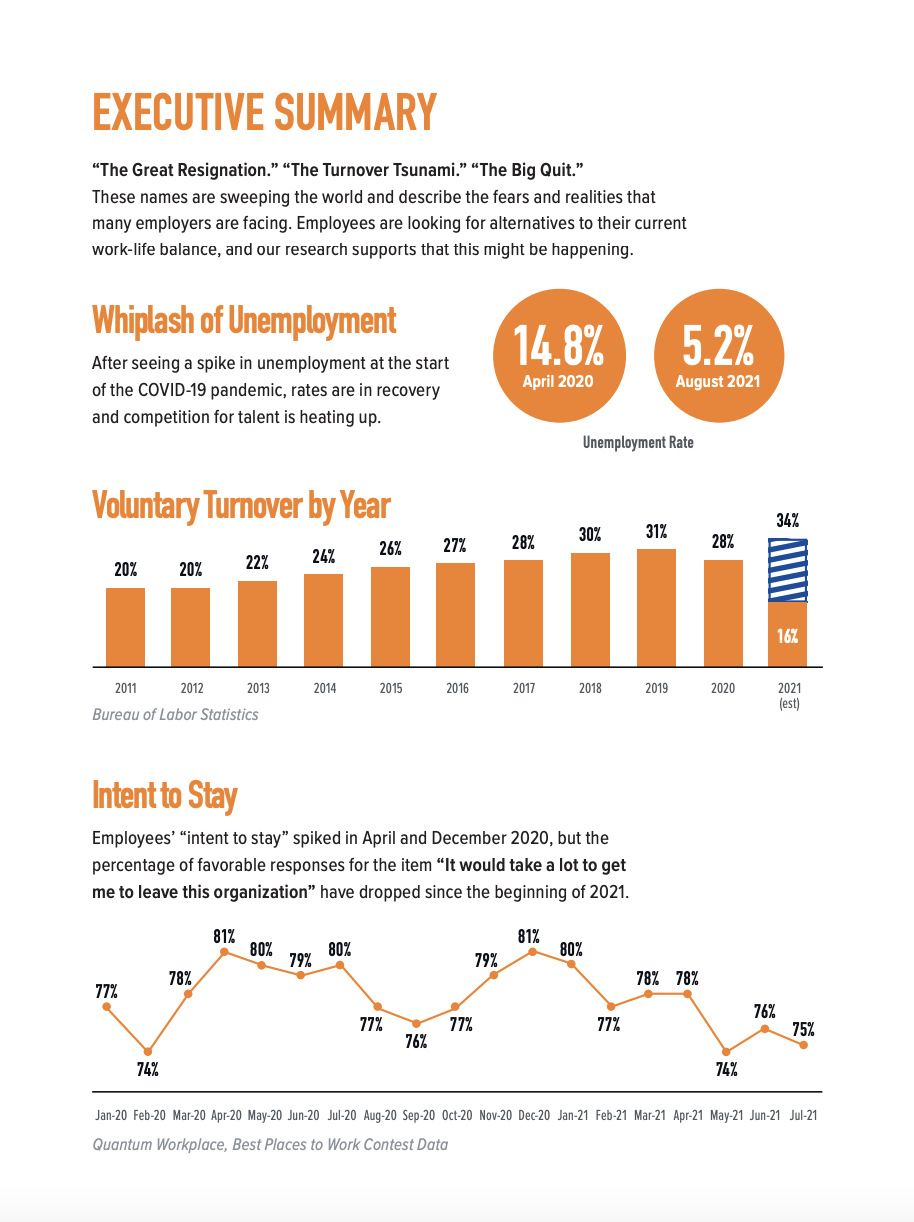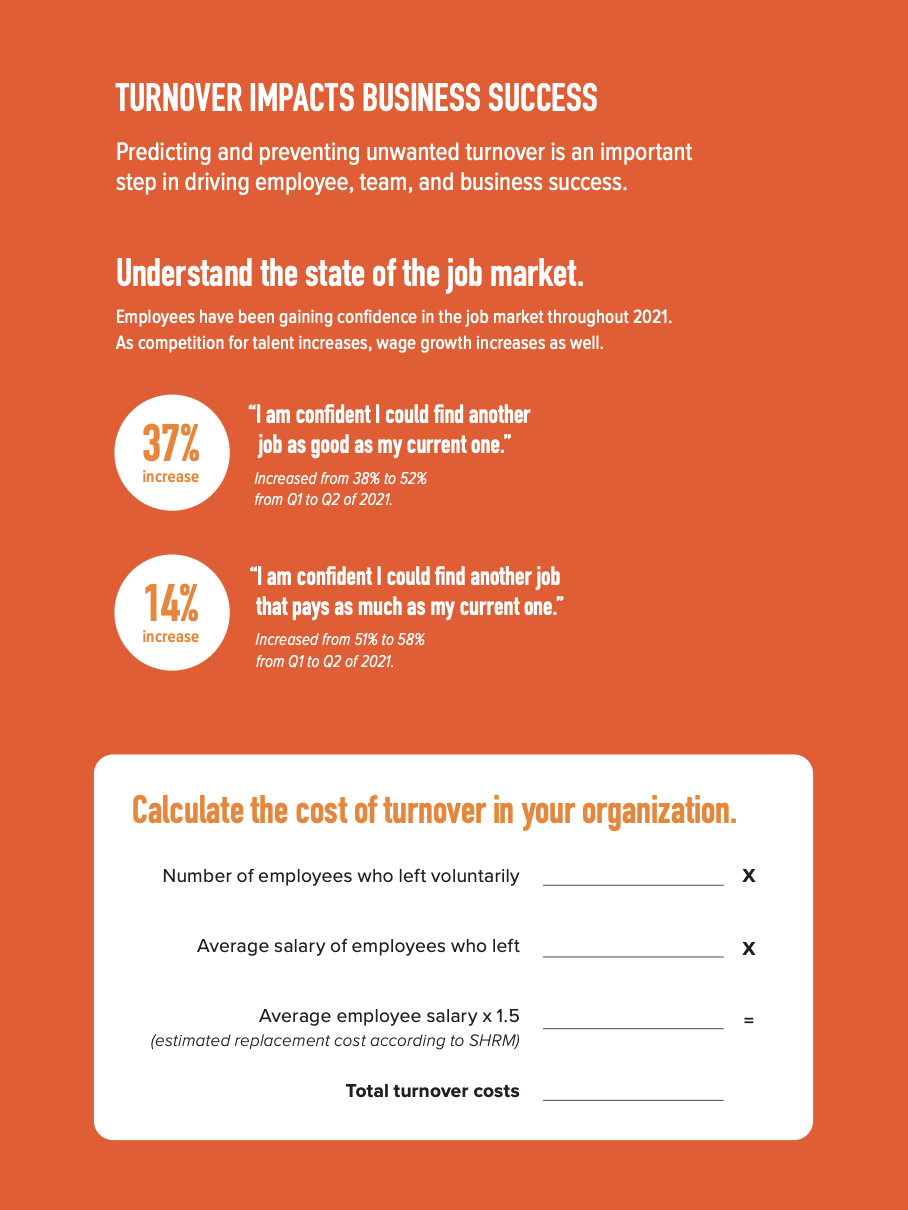4 Ways to Retain Your Employees
The best way to prevent unwanted turnover is to focus on making incremental improvements in pursuit of a better workplace. Attract, engage, and retain your employees in a new world of work with these tips:
1. Prioritize critical leader communication.
Middle market companies experience a great deal of change as they grow and succeed—so it's understandable that employees might feel more uncertain about their place in the organization’s future. To help foster engagement, leverage various tactics to communicate to employees about their role in the growth of the company and its future. At department and managerial levels, organizations should put programs in place that encourage professional development plans and goal setting.
Learn how to boost your employee development strategy >
Learn how to improve leadership communication >
2. Focus on employee recognition and engagement.
When employees are mentally and emotionally connected to their work, team, and organization, they are less likely to leave. To help foster engagement, ensure that employees feel their needs, concerns, and perspectives are considered when decisions are made. This is especially important when the decisions directly affect employees. Solicit feedback from various levels of the organization to help inform leaders, communicate how those suggestions influence decisions, and explain how and why the final decisions are made.
Learn how to increase employee engagement >
3. Build employee career paths.
Career growth and development are key to employee retention. Offer a variety of training and mentoring opportunities to ensure your employees are staying motivated and on top of their game. Discuss career paths regularly to help your employees understand what skills, certifications, or stretch projects might be necessary to progress professionally.
Learn how to boost your employee development strategy >
4. Use the right tools.
Getting a clear picture of turnover in your organization can be difficult. Prevent unwanted turnover and retain your employees with Engagement, Performance, and Intelligence tools from Quantum Workplace.
Learn how the right tools can help you reduce employee turnover >









